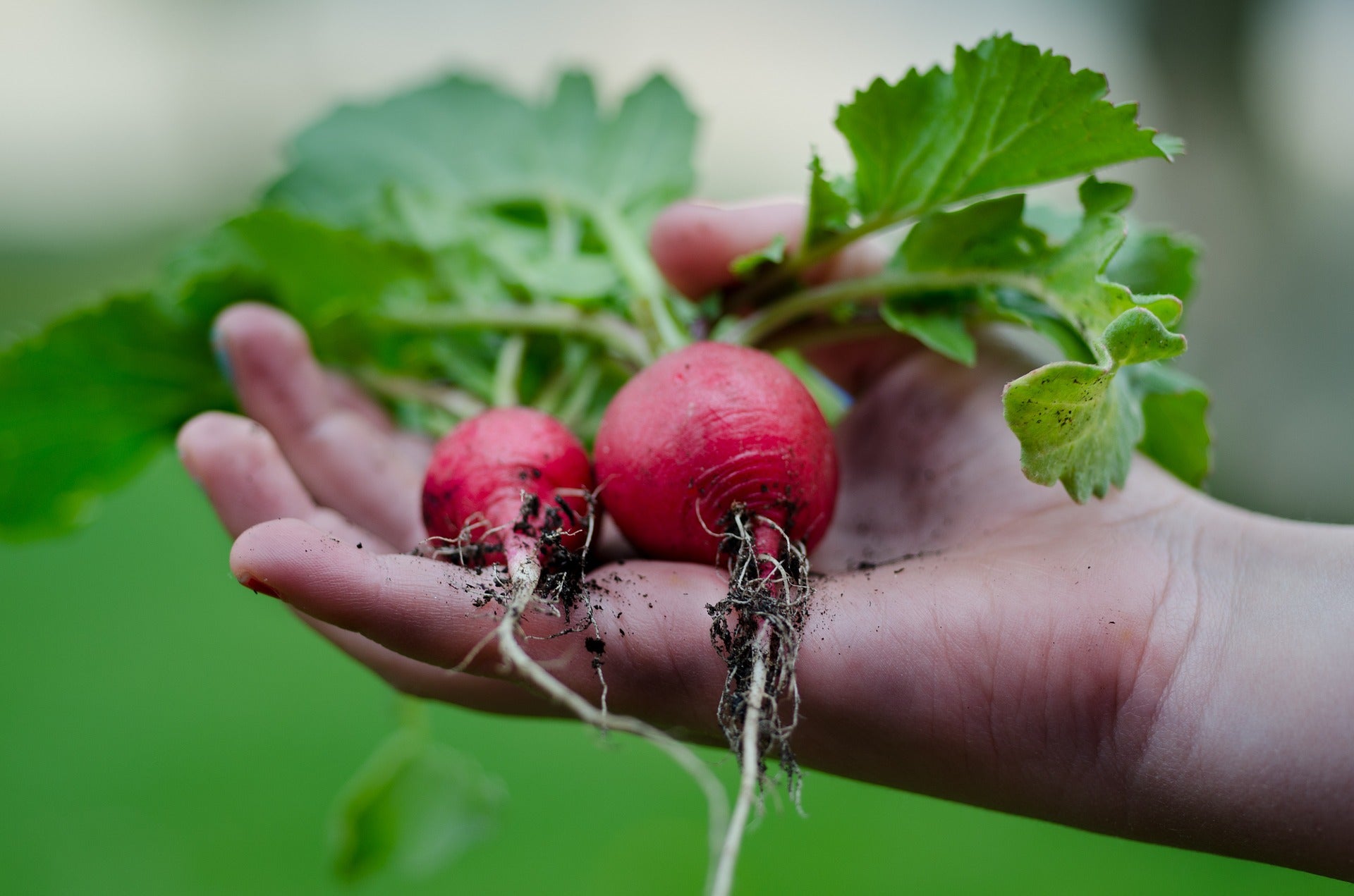Quick, crunchy, and very nutritious, radishes have developed a bad rap for being spicy and bland. I'm here as the champion of the radish, the singer of praises, the pleader of second chances. With a few growing tricks, you'll fall in love with these little gems and will have them growing at the base of your other plants forever and ever!

Crop Description:
There are two basic types of radish, named for the seasons in which they are harvested.
Spring radishes are fast growers, available in shades of white, pink, red, purple, black, and combinations of the group. In shape, they can be round -often called “globe,”- cylindrical, or oval. They generally have a subtler flavor than winter radishes. Winter radishes take longer to grow, often 60 days or more, and are divided into four groups:
Daikons resemble thick, white carrots and are the best known of the Winter types. Chinese, also known as “lo bok” or “lo po,” are long and white. Black Spanish Radishes have black skins and tart, white flesh. Lastly, but not common in the United States are German Beer Radishes which can be so large they resemble turnips.
No matter what kind you choose, the entire plant is edible! Stir-fry or steam the young leaves, and let some of your plants go to flower and toss cute the little blossoms into a salad!

Planting and Aftercare:
As with all root crops, the key to success is well drained soil with organic matter mixed in. If you are new to adding organic matter, spread about 2-3” of well-rotted manure or compost onto your planting bed. Distribute your organic material as evenly as possible across the entire area. Using a garden fork, break up the surface of the soil and gently turn in your compost.
Sow 8-10 radish seeds per (linear) foot at a depth of ¼”, and cover the seeds with compost rather than your garden soil, which will assist the sprouts with pushing up out of the soil. Space your rows 6-12” apart.
Thin plants after they grow a first set of leaves, allowing 4” between each plant. (You can add the thinnings to your salad!) Keep well-watered over the growing season.
Tips:
Radishes can be planted to mark rows of carrots, which mature much later. The radishes will be harvested before the carrots are large enough to take up space, and will help simplify thinning the carrots because they allow only enough space for one to two carrot seedlings.
Tired of spicy radishes? While some varieties are naturally spicier than others, many are quite sweet! There are two types of garden stress that can turn even the sweetest roots spicy: summer heat, and lack of water! Both of these stressors can be helped by harvesting your spring radishes before the heat of summer sets in, and keeping your roots well-watered while they are growing.
Radishes should always be direct seeded in your garden. They produce a long taproot quickly that does not transplant well.
Trouble to Watch For:
Radishes are not bothered seriously by many pests. Their quick harvest time gets them on your plate before much damage can be done. Occasionally winter radishes can be bothered by root maggots. These legless, yellow, ½” long maggots can burrow into radishes, making them inedible. To prevent them settling in, you can add wood ashes when planting your seeds, and if you really have a problem, surround your young plants with a ring of wood ash, refreshing as needed.

Growing Zone and Conditions:
Radishes are an annual vegetable that is suitable for growing in all USDA grow zones. Healthiest plants will grow in full sun, but respectable sized roots can be grown in the shade of other vegetables. Growing in part shade is harder for winter radishes that need more time to size up.
In the early spring, start sowing seeds as soon as the soil can be worked. Plant new seeds about every 7-10 days for a continuous crop. Continue sowing until about 21 days before you expect very hot summer temperatures to set in.
Mid to late summer is the time to start sowing winter radish seeds. This will allow the vegetables to mature before the shorter days and cooler weather of fall will slow their growth. Leave winter radishes in the ground until they mature in fall or winter. When weather gets cold, mulch with straw or shredded leaves and you can continue to harvest through winter
| |
Article Written by: Angie Lavezzo |
|
About the Author: Angie Lavezzo is the former general manager of Sow True Seed. Beyond her professional role at Sow True, Angie's passion for gardening extends into personal hands-on experience, fostering plants and reaping bountiful harvests. |


